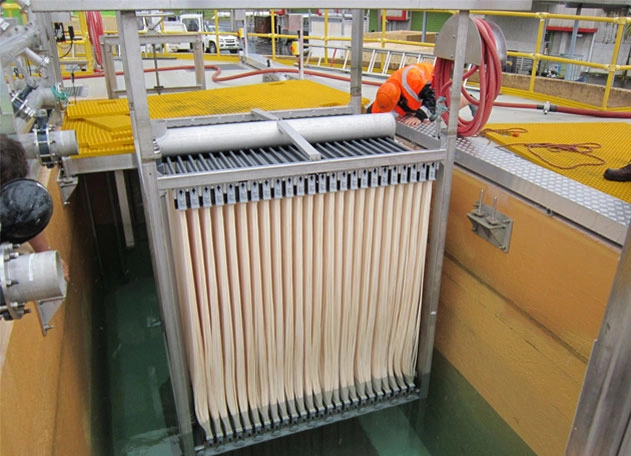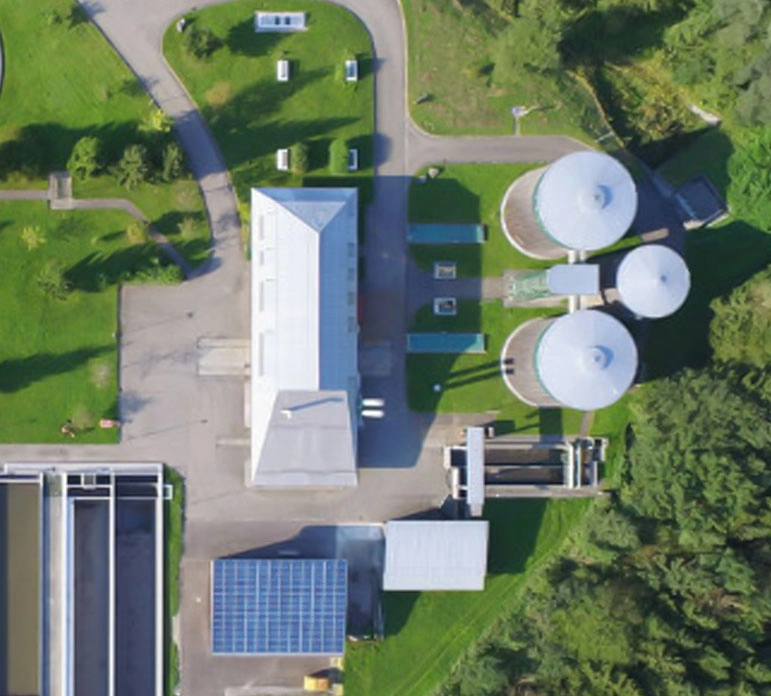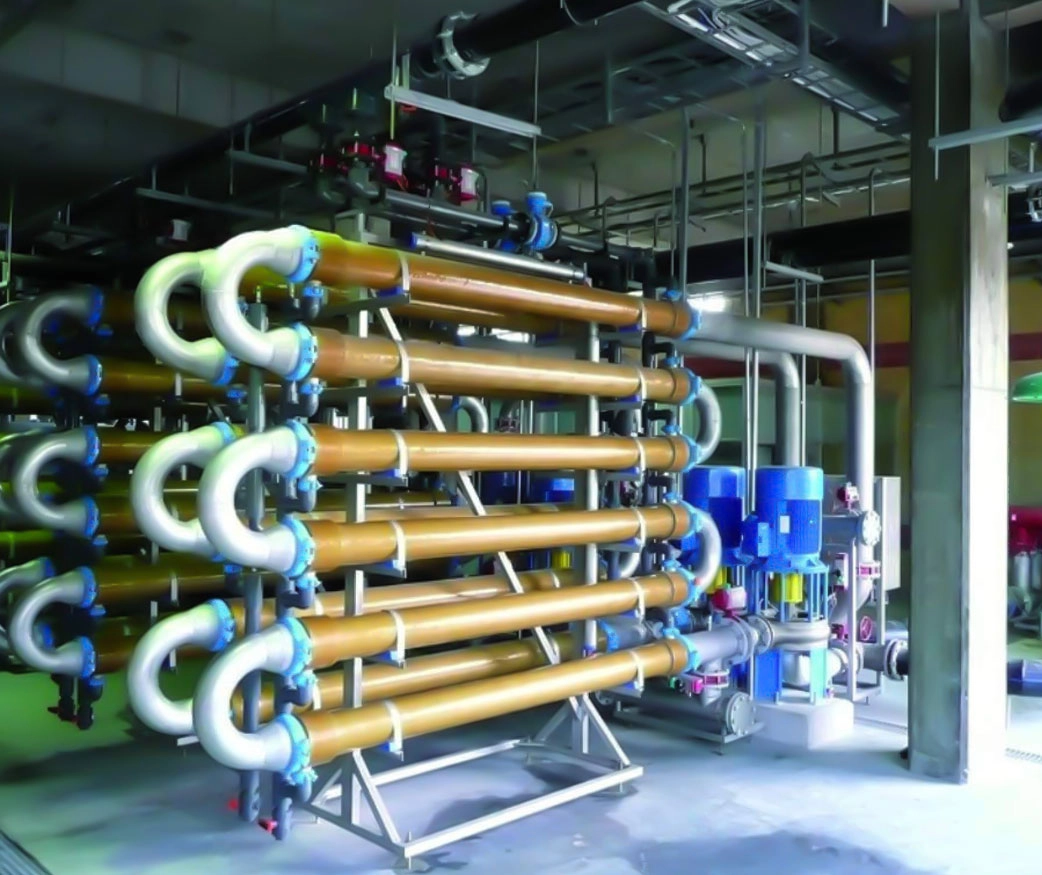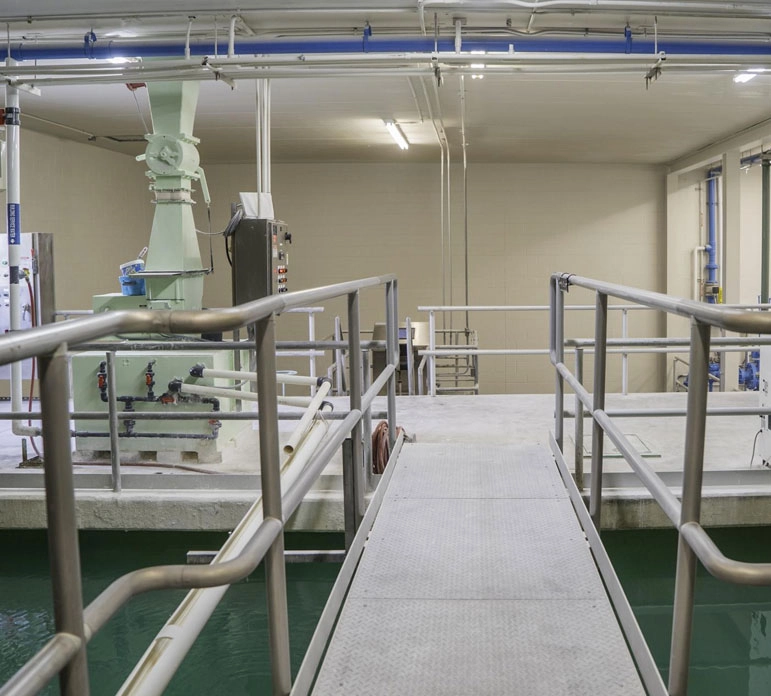Bioreactor
MBR stand for Membrane Bio Reactor, it is essentially a filtration process which used bio-membrane to treat wastewater. When a microfiltration or ultra filtration membrane is submerged in mixed liquor, and a positive (by gravity) or suction pressure is applied, the pores of the membrane and the resulting bio film formation on the surface of the membrane acts as a physical barrier that allow only the permeate or clean water to pass through. Pre-treated, screened influent enters the membrane bioreactor, where biodegradation takes place.
The mixed liquor from the bioreactor is withdrawn and pumped along submerged or semi cross-flow filtration membrane modules. Permeate form the membrane constitutes the treated effluent. The reject stream, consisting of concentrated bio- solids, is returned to the bioreactor. Excess bio-solids are wasted from the bioreactor or from the return line. One of the biggest advantages that MBR brings to the table is the relatively smaller foot print, making it ideal for a country like India.

Also, while expansion of capacity with a conventional treatment plant can mean installing another large clarifier, in an MBR plant you can simply add more membranes to existing basins expanding capacity without expanding footprint, this makes it even more pertinent for the growing economic like India and China, which are witnessing strong growth in population, urbanization and industrialization. Some other advantages that MBR offers over conventional


Some reason why MBR can be called an install and forget technology is :-
